|
| July of 1969 was a busy time for me as the letter below of July 9, 1969, attests.
The following is from my journal and memoir, “Before and After Vietnam 1969-70 Military Experiences of Thomas K. (Tom) Butt.” Take a look at the full color video clips on pages 2 and 3.
9 July 1969 – Long Binh
Dear Folks,
I’ve been working harder the last two weeks (long hours-wise) than probably any time since architecture school days – this being the reason for the communications gap. Why, I’ve even had to cancel some of my social obligations!
The S-3 major went home late in May, leaving a cpt. as S-3 and myself moved to assistant S-3, plus having all the duties of my former job. Cpt. Ryan usually spends the entire day at conferences or with the col. At job site inspections all over the country – leaving me back at HQ to handle all business, answer all questions, etc. My main function is receiving, assigning and coordinating all the combat & operational support missions that come down from 20th Brigade and are parceled out to one of our five battalions. I couldn’t have lasted 10 minutes the first week without the sergeant major, but I’ve gotten pretty much in the groove now. Tremendous feeling of power and all that.
I’ve been alternating between 14 and 16 hour days ever since I started this, and I don’t think we’ll get a major until about 1 August.
I did manage to slip into Saigon, however, for a couple of nights over the weekend, and I’m happy to say that my comrades in the discussion and cultural exchange program have made new inroads into the social elite of the peculiar city – causing me great anguish in trying to determine how I can conscientiously accept my $65 per month combat pay. I guess it must cover the drive down or something.
I don’t know whether those calls that Paul Wright sets up are worth the trouble. I can hardly hear anything, and with all the truck and choppers that seem to be drawn to my window, It’s nearly impossible to communicate. They’ve got a great phone system here – sometimes – It’s supposed to be direct dial anywhere in southeast Asia, and when it works, it’s great – but, of course, when it’s really necessary, it’s out.
Coppage should be coming down this week finally, which is good. We’re having a housewarming at pour groovy new townhouse apartment in Saigon (roof garden, balcony, the whole works). It’s kind of a weekend house sort of thing.
I sent Jack a fancy camera which he will probably not be able to operate if he’s like me, but he can impress a lot of people by flashing it around.
If you see Backus around, ask him to advise me as to his plan for seeking his fortune or whatever other goal or non-goal he is working toward. If he has flown the coop already, see if you can get his address.
It looks from the U.S. papers like everybody is all psyched up over the troop withdrawal. I think it’s a pretty slick move by Nixon to placate the radicals, and it shouldn’t affect the situation over here much, if at all. I continue to be optimistic, and the only problem involved is keeping the psychological edge that I think we are developing for the first time in years.
Considering that I have the misfortune of being in the army, things couldn’t be better right now, so don’t worry about me. I’m just glad I don’t have a house to sell. Too bad you can’t get it on the Saigon black market, it would bring a fortune.
Love, Tom
Compared to those in combat, I had it easy, but I still worked hard and did my best to play hard. Because my job required developing and documenting detailed information about hundreds of missions in our Area of Operations (AOR), I spent a lot of time on the road and in the air, but I always got to come back to Long Binh at night. Following is a description of a typical day (and sometimes night) from my memoir:
The standard Army work week in Vietnam was six and a half days a week. We typically had an eight or nine-hour day, starting at 8:00 a.m., with an hour off for lunch. If I didn’t go anywhere during the day, I reported for work in the S-3 office, a hot, dusty un-air conditioned, metal Quonset building.
On Monday of each week, we typically went to an intelligence briefing conducted by the group S-2 (Intelligence Officer) in the Group Strategic Operations Center (SAC). There was a big map on the wall, and the S-2 described where all the VC (Viet Cong) and NVA (North Vietnam Army) were operating and what they were thought to be planning. There was also a review of actions the previous week, including any casualties.
We also had a meeting of the S-3 (Operations) officers and non-coms (non-commissioned officers) to discuss projects and responsibilities or the coming week. Our job was mostly planning, assigning missions, inspecting, trouble-shooting, facilitating and reporting. I was supposed to check on the status of every job assigned by the 20th Engineer Brigade S-3 to the 159th Engineer group. Every Thursday morning, I went over to the 20th Brigade Headquarters at Bien Hoa (about five miles way) to report verbally and in writing on the week’s activities to the brigade commander, a brigadier general.
To come up to speed, I had to contact every person in charge of every job to get a report. There were hundreds of them. I kept a file on every job assigned to the Group, updated its status every week, and prepared a weekly written report. If a project was stalled, late in getting started or behind schedule, I had to find out why and often had to take the initiative to trouble shoot it. I had to go out and look at a lot of the projects so I could accurately describe them. I reported on the quantities of gravel and asphalt produced, the number of hours the plants were down for maintenance, exactly which parts were malfunctioning and when the new parts were expected to arrive and be installed. I also reported on manpower strengths and casualties.
The office work was tedious and generally boring, but also frequently interesting and challenging when some problem needed to be solved. I spent several days one week driving and flying around Vietnam looking for a special piece of equipment to grind down a concrete floor slab after a pour had gone bad for a PX building at Long Binh.
If I was at Long Binh during the middle of the day, I usually jogged for about a mile, jumped into the swimming pool at the 46th Engineer Battalion next door and ate a hamburger and fries for lunch.
In the evening, I believe dinner was about 6:00 p.m. in the Company mess hall.
The Company “Officer’s Club” was in the same building as the mess hall, with a different entrance. It didn’t amount to much. There was a bar along one wall, and a Vietnamese woman worked as bartender. There were a few chairs and tables in the room. Drinks were cheap, and I recall that it was air-conditioned. Sometimes, we went to one of the larger officer’s clubs on base or went to a movie, but mainly in the evening folks read books, listened to music or drank. Later, we completely remodeled the Officer’s Club into a showcase.
Sometimes, there was night duty of some kind. Every night, there had to be a “duty officer” for the headquarters company, and each officer’s time came up about once a month. That meant you had to stay up all night and respond to any incoming communications that required action.
Perimeter guard duty at Long Binh was allocated so that each organization had charge of a sector and was responsible for manning that sector each night. The responsibility was further delegated to and rotated among smaller units, so that our headquarters company might have the assignment once a month. For each sector, there was also an “officer of the guard,” who was responsible for constantly checking the sector all night long to make sure those on guard duty were awake.
I think I pulled guard duty only once when our company was tapped. I remember one of the spec 4s who was supposed to drive me around was checking his weapon, a .45 caliber pistol, when it went off and missed his foot by a hair. Along our perimeter sector were about a dozen guard bunkers, each with a fixed M-60 machine gun and a “starlight scope” (night vision device). Each bunker was manned by several soldiers. It was real spooky running the perimeter checks. The jeep light had to be turned off, and of course, there was no light in the bunkers. I usually found the guards asleep, and I was concerned that someone might wake up in confusion and start shooting. So, before entering each bunker, I would try to make enough noise, but very carefully, so as not to jolt anyone awake.
Once I got into the routine, and if I didn’t have to work too late or start too early the next morning, I would try to get down to Saigon as much as possible. I found that I could walk down to the main gate a block away and easily hitch a ride to Saigon in the early evening. I would get dropped off and catch a motorized cyclo to the apartment several of us rented and where Allen Tolbert and Eric Nelson lived.
Sometimes we partied at the apartment, but often as not, we went out on the town, eating at a restaurant or sidewalk cart, drinking in a bar, or just walking around enjoying the city. The first apartment was on a main street, Ham Nghi, near the center of town and Central market. It was in the second or third floor over a shop.
Later, and for most of the time that I was there, we rented an apartment in third story of a three-story building on Yen Do Street, which I believe was off of the main street leading to Tan Son Nhut airport. The building was concrete with a full roof patio having a pretty good view of the surrounding neighborhood. It was one room with a closet and bathroom. I think Allen Tolbert was the only one who actually lived there – the rest of us just crashed when we could. There were two single beds and a small refrigerator where we kept bottles of water filled by the mama san, supposedly after boiling, from the public water supply. It had high ceilings with high windows and a ceiling fan.
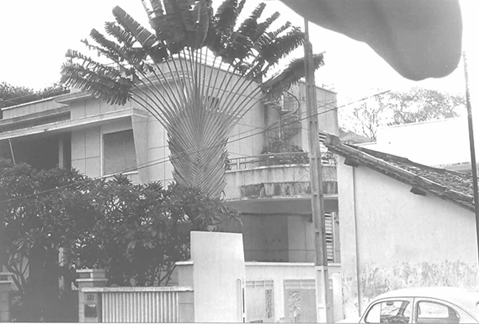

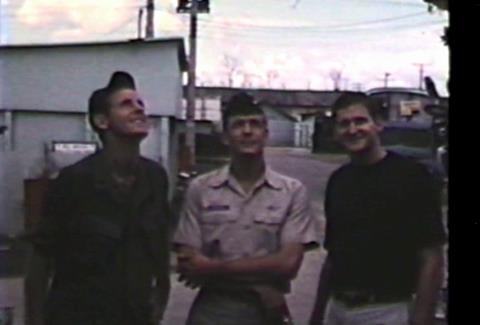
Figure 2 - Tom Butt, George Coppage and Murray Green at Bien Hoa Air Base, 1969
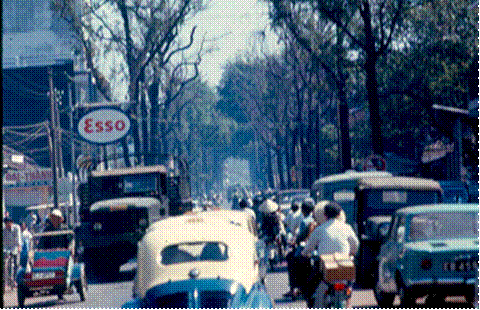
Figure 3 - Typical downtown Saigon traffic. Here you can see a “cyclo” (lower left), A “deuce and a half” (under the Esso sign), taxis, motor scooters, bicycles, a jeep and a private automobile. The tall trees along the street are a French Colonial touch.
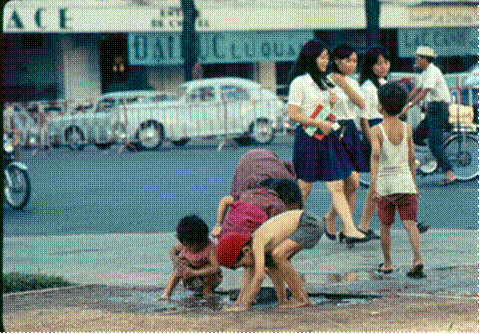
Figure 4 - Saigon street scene. This is across the street from the Continental Palace Hotel, probably the premier hotel of the day – a remnant of the French Colonial lifestyle. On the veranda were wicker chairs and cocktail tables where the correspondents, ex-patriots and contractors hung out.
From my Memoir:
After my father died in May 2000, I found in his files all the letters I had written home to my parents from Vietnam in 1969-70. I thought it would be a worthwhile project to transcribe them as a chronicle of one person’s experience in a war that has become a metaphor. Unlike the common perception that Vietnam was all death and danger, I found my one-year tour to be fascinating and professionally engaging.
I arrived in Vietnam at the height of the American commitment in March 1969 when 543,000 U.S. military personnel were spread throughout the country. (Chapter 28, The U.S. Army In Vietnam, Extracted From Revised Edition Of American Military History, Army Historical Series, United States Army Center Of Military History) But it was also the beginning of “Vietnamization,” when the U.S. commitment rapidly wound down by order of President Nixon. Although the U.S. presence was rapidly dwindling, the years 1969-1970 saw 14,000 of the nearly 50,000 total U.S. military deaths in Vietnam. This was nearly 20 fatalities a day, compared to the approximately two per day currently experienced in Iraq in mid 2004. Very few of these Vietnam fatalities, however, were Army engineers. The Corps of Engineers is recognized as one of the Army’s “combat arms,” and the secondary mission of the Army Engineers is to “fight as infantry,” but Army engineers in Vietnam were engaged far more in construction and land clearing than actual combat. I came to believe that the Viet Cong knew the country would belong to them someday, so why impede the construction of infrastructure?
My Military Occupation Specialty (MOS) was 1331, “Combat Engineer Unit Commander,” but instead of being assigned as a platoon leader (a common assignment for a lieutenant in a combat theater), I was assigned to the operations section of an Engineer Group Headquarters, responsible for directing approximately 6,000 U.S. engineer troops, 3,000 Vietnamese civilian employees and several American road construction contractors. Army organizations are typically organized into four general areas of responsibility: S-1 (administration), S-2 (intelligence), S-3 (operations) and S-4 (logistics). The role of three of these is to support fourth, operations, in order to accomplish the “mission.”
The headquarters operations section provided some engineering design as well as overall management and control of the operations of the group components, including acting as a conduit from higher headquarters and other commands needing engineering support.
My official home was a “hootch” and a nearby Quonset hut office at the sprawling Long Binh Post about 25 kilometers outside Saigon, but I had the opportunity to travel often via airplane, helicopter and jeep almost daily to a wide variety of locations throughout the 159th Group operations area and some outside the Group area but within the 20th Engineer Brigade area of operations. Flying around Vietnam, we would usually see air strikes visible in the distance and sometimes ongoing combat operations. I can’t honestly say that I was ever actually “shot at” in the sense of bullets whizzing by, but our cantonment area at Long Binh was periodically the target of fire from 122 mm rockets. When Long Binh came under rocket attack, sirens went off, and we were supposed to head for a bunker. After a while, I figured out that the maximum range of the 122 mm rockets nearly always launched from a nearby hill (“Rocket Ridge”) was a few hundred feet short of my hootch, typically exploding on impact at the bottom of the hill below our area (fittingly called “Rocket Gulch”), so I stopped going to the bunker.
I spent a lot of time at night in Saigon, traveling the Saigon-Long Binh highway after dark and before dawn, hitchhiking rides with military vehicles. Although it seemed to be relatively safe, the 18-kilometer drive was always interesting, with the sound of small arms fire, mortars and rockets audible in the countryside and the sky always lit up by parachute flares. More than once, I arrived at the main gate of Long Binh in the pre-dawn darkness, finding it closed with the MP’s in full defensive mode. “What in the hell are you doing out there’” they would say, “Don’t you know we’re under attack?”
Even at Long Binh, the sounds of small arms fire and explosions in the distance were frequent throughout the night. Some may have been from actual VC probes and those countering them, but most were probably from nervous or bored soldiers on guard duty. One of the most enduring memories is the periodic sound of B-52s carpet bombing miles away near the Cambodian border. Those who live in California would recognize it as similar to a protracted earthquake.
The latter part of 1969 and early 1970 was a time of almost surreal contrasts. Pitched battles were still occurring, but at the same time America was packing up to go home. The following, from an Army History of the Vietnam Conflict characterizes the time:
Since the 1968 Tet offensive, the Communists had restocked the A Shau valley with ammunition, rice, and equipment. The logistical build-up pointed to a possible NVA offensive in early 1969. In quick succession, Army operations were launched in the familiar pattern: air assaults, establishment of fire support bases, and exploration of the lowlands and surrounding hills to locate enemy forces and supplies. This time the Army met stiff enemy resistance, especially from antiaircraft guns. The North Vietnamese had expected the American forces and now planned to hold their ground.
On 11 May 1969, a battalion of the 101st Airborne Division climbing Hill 937 found the 28th North Vietnamese Regiment waiting for it. The struggle for "Hamburger Hill" raged for ten days and became one of the war's fiercest and most controversial battles. Entrenched in tiers of fortified bunkers with well-prepared fields of fire, the enemy forces withstood repeated attempts to dislodge them. Supported by intense artillery and air strikes, Americans made a slow, tortuous climb, fighting hand to hand. By the time Hill 937 was taken, three Army battalions and an ARVN regiment had been committed to the battle. Victory, however, was ambiguous as well as costly; the hill itself had no strategic or tactical importance and was abandoned soon after its capture. Critics charged that the battle wasted American lives and exemplified the irrelevance of U.S. tactics in Vietnam. Defending the operation, the commander of the 101st acknowledged that the hill's only significance was that the enemy occupied it. "My mission," he said, "was to destroy enemy forces and installations. We found the enemy on Hill 937, and that is where we fought them."
About one month later the 101st left the A Shau valley, and the North Vietnamese were free to use it again. American plans to return in the summer of 1970 came to nothing when enemy pressure forced the abandonment of two fire support bases needed for operations there. The loss of Fire Support Base O'REILLY, only eleven miles from Hue, was an ominous sign that enemy forces had reoccupied the A Shau and were seeking to dominate the valleys leading to the coastal plain. Until it redeployed in 1971, the 101st Airborne, with the marines and South Vietnamese forces, now devoted most of its efforts to protecting Hue. The operations against the A Shau had achieved no more than Westmoreland's large search and destroy operations in 1967. As soon as the allies left, the enemy reclaimed his traditional bases.
The futility of such operations was mirrored in events on the coastal plain. Here the 23d Infantry Division fought in an area where the population had long been sympathetic to the Viet Cong. As in other areas, pacification in southern I Corps seemed to improve after the 1968 Tet offensive, though enemy units still dominated the Piedmont and continued to challenge American and South Vietnamese forces on the coast. Operations against them proved to be slow, frustrating exercises in warding off NVA and Viet Cong main force units while enduring harassment from local guerrillas and the hostile population. Except during spasms of intense combat, as in the summer of 1969 when the Americal Division confronted the 1st North Vietnamese Regiment, most U.S. casualties were caused by snipers, mines, and booby traps. Villages populated by old men, women, and children were as dangerous as the elusive enemy main force units. Operating in such conditions day after day induced a climate of fear and hate among the Americans. The already thin line between civilian and combatant was easily blurred and violated. In the hamlet of My Lai, elements of the Americal Division killed about two hundred civilians in the spring of 1968. Although only one member of the division was tried and found guilty of war crimes, the repercussions of the atrocity were felt throughout the Army. However rare, such acts undid the benefit of countless hours of civic action by Army units and individual soldiers and raised unsettling questions about the conduct of the war.
What happened at My Lai could have occurred in any Army unit in Vietnam in the late 1960's and early 1970's. War crimes were born of a sense of frustration that also contributed to a host of morale and discipline problems, among enlisted men and officers alike. As American forces were withdrawn by a government eager to escape the war, the lack of a clear military objective contributed to a weakened sense of mission and a slackening of discipline. The short-timer syndrome, the reluctance to take risks in combat toward the end of a soldier's one-year tour, was compounded by the "last-casualty" syndrome. Knowing that all U.S. troops would soon leave Vietnam, no soldier wanted to be the last to die.
Meanwhile, in the United States harsh criticism of the war, the military, and traditional military values had become widespread. Heightened individualism, growing permissiveness, and a weakening of traditional bonds of authority pervaded American society and affected the Army's rank and file. The Army grappled with problems of drug abuse, racial tensions, weakened discipline, and lapses of leadership. While outright refusals to fight were few in number, incidents of "fragging"— murderous attacks on officers and noncoms—occurred frequently enough to compel commands to institute a host of new security measures within their cantonments. All these problems were symptoms of larger social and political forces and underlined a growing disenchantment with the war among soldiers in the field.
After transcribing my “letters home” I decided that the addition of photos, graphics and additional narrative to fill the gaps would provide a better context for the actual letters. Finally, I decided to include a summary of my military experiences leading up to Vietnam, including ROTC, the Engineer Officer Basic Course and my assignment to Ft. Polk.
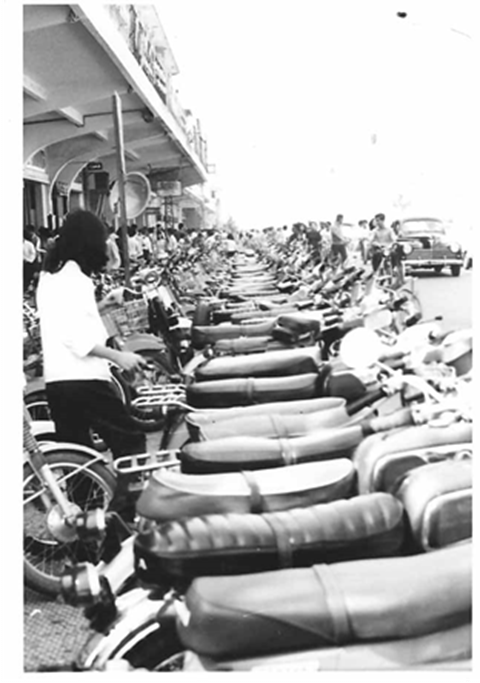

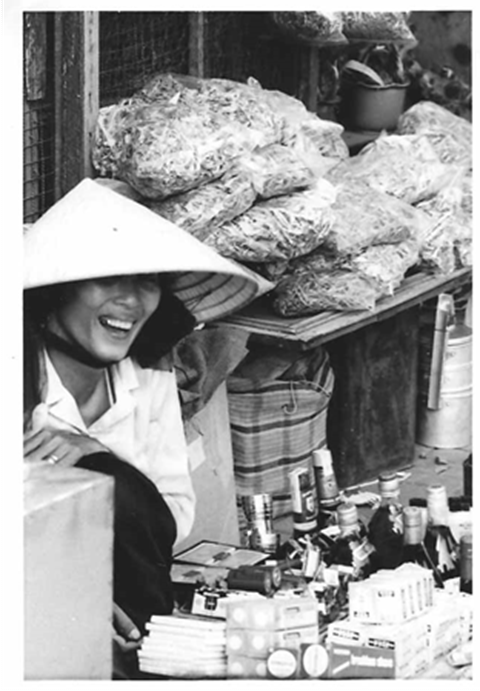
Figure 6 - The Saigon Black Market
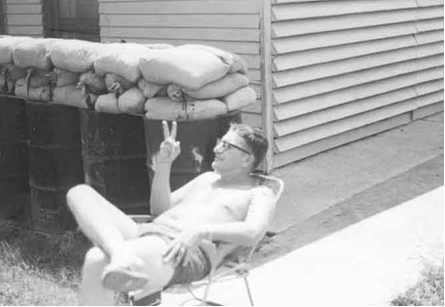
Figure 7 - Sgt Hancock in front of his hooch protected from rocket and small arms attack with soil-filled oil drums and sandbags
|

